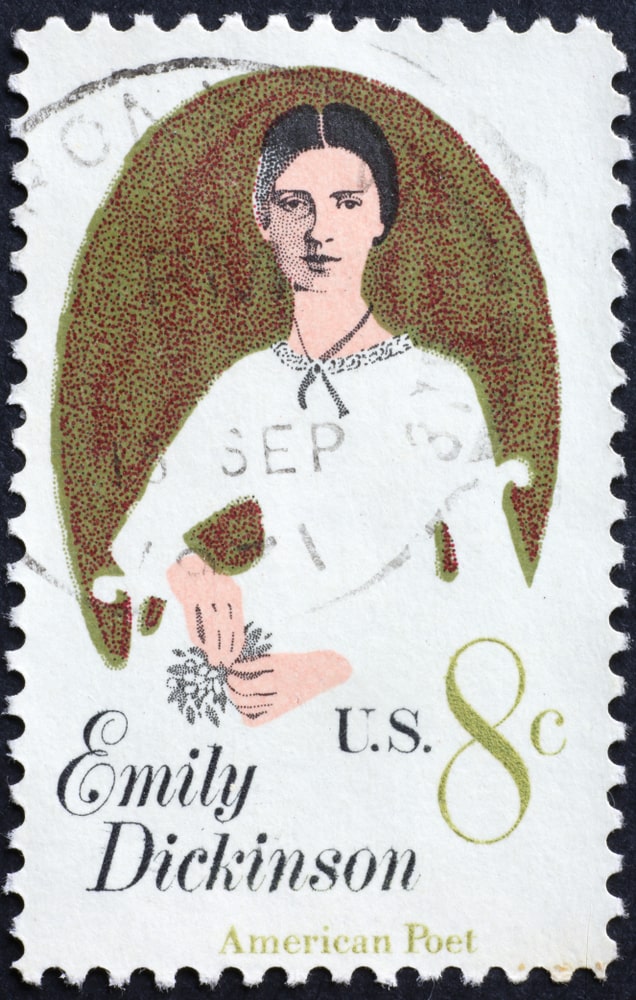In this article, we’ll look at the solution to this GMAT sentence correction question. We have analyzed the 5 answer choices and arrived at the correct choice through 3 steps:
- Meaning analysis
- Error analysis
- Answer choice analysis
General information on this question
- Difficulty level – Medium
- 63% of people got this question correct
- The average time taken to correctly answer this question – 1:44

Let’s look at the question-and-answer choices
Emily Dickinson’s letters to Susan Huntington Dickinson were written over a period beginning a few years before Susan’s marriage to Emily’s brother and ending shortly before Emily’s death in 1886, outnumbering her letters to anyone else.
(A) Dickinson were written over a period beginning a few years before Susan’s marriage to Emily’s brother and ending shortly before Emily’s death in 1886, outnumbering
(B) Dickinson were written over a period that begins a few years before Susan’s marriage to Emily’s brother and ended shortly before Emily’s death in 1886, outnumber
(C) Dickinson, written over a period beginning a few years before Susan’s marriage to Emily’s brother and that ends shortly before Emily’s death in 1886 and outnumbering
(D) Dickinson, which were written over a period beginning a few years before Susan’s marriage to Emily’s brother, ending shortly before Emily’s death in 1886, and outnumbering
(E) Dickinson, which were written over a period beginning a few years before Susan’s marriage to Emily’s brother and ending shortly before Emily’s death in 1886, outnumber
Solution
Begin your GMAT preparation with the most reviewed GMAT prep company on GMAT club, which has delivered more 700+ scores than any other GMAT club partner. Achieve GMAT 740+ with our AI driven tools that give you personalized feedback at every step of your GMAT journey. Take our free trial today!
Meaning Analysis
- Emily Dickinson’s letters to Susan Huntington Dickinson were written over a period
- beginning a few years before Susan’s marriage to Emily’s brother and
- ending shortly before Emily’s death in 1886,
- outnumbering her letters to anyone else.
- Emily Dickinson’s letters to Susan Huntington Dickinson were written over a period
The sentence starts by mentioning that Emily Dickinson (ED) wrote letters to Susan Huntington Dickinson (SHD). The letters were written over a certain period.
- beginning a few years before Susan’s marriage to Emily’s brother and
- ending shortly before Emily’s death in 1886,
This part of the sentence describes that [period over which the letters were written. ED started writing letters to SHD a few years before SHD got married to ED’s brother. She stopped writing to her a little before her death in 1886.
- outnumbering her letters to anyone else.
The last part of the sentence seems to present the effect of the writing of letters over a period. It is structured such that it seems to convey that because ED’s letters were written to SHD over a certain period, they outnumbered all of Eds letters to anyone.
This meaning is illogical. It makes no sense to say that just because the letters were written over a certain period, the letters to SHD outnumbered or exceeded in number all of ED’s letters written to anyone.
From the context of the sentence, we can understand that ED wrote letters to SHD over a certain period, and her letters to SHD exceed the number of letter ED wrote to anyone. This is the logical intended meaning of the sentence.
Error Analysis
Modifier Error leading to Meaning Error
As already discussed in the meaning analysis section, the usage of the comma + verb-ing modifier outnumbering… does not make sense In presenting the result of the action in the preceding clause – were written.
If we analyze the usage of the comma + verb-ing modifier outnumbering… as presenting the “how” aspect or the logical description of the action were written, the modification still makes no sense. Hence, the usage of the comma + verb-ing modifier outnumbering… is incorrect.
Answer Choice Analysis
Choice (A): Dickinson were written over a period beginning a few years before Susan’s marriage to Emily’s brother and ending shortly before Emily’s death in 1886, outnumbering
Incorrect as discussed (25% people chose this option)
Choice (B): Dickinson were written over a period that begins a few years before Susan’s marriage to Emily’s brother and ended shortly before Emily’s death in 1886, outnumber
Incorrect
- Verb Tense Error
The use of the simple present tense verb begins is incorrect because this action took place in the past. The sentence must use the simple past tense verb began.
- Structure Error
The subject letters has two verbs – were written and outnumber. But there is no connector between these two verbs.
Choice (C): Dickinson, written over a period beginning a few years before Susan’s marriage to Emily’s brother and that ends shortly before Emily’s death in 1886 and outnumbering
Incorrect
- Parallelism Error
The two modifiers for the noun period – beginning a few years… and that ends shortly… – form a list. But this list is not grammatically parallel as the first element is a phrase while the second is a clause.
- Structure Error
There is no entity in the sentence that the structure and outnumbering… can logically and grammatically connect to.
- Verb Tense Error
The use of the simple present tense verb ends is incorrect because this action took place in the past. The sentence must use the simple past tense verb end.
Choice (D): Dickinson, which were written over a period beginning a few years before Susan’s marriage to Emily’s brother, ending shortly before Emily’s death in 1886, and outnumberingIncorrect
Incorrect
- SV Must Exist Error
There is no verb for the subject letters.
- Modifier Error leading to Parallelism and Meaning Error
The word outnumbering… acts as the noun modifier for the noun a period. This modification is illogical.
Because of its usage as a verb-ing modifier and the placement of the connector and before it, outnumbering… now forms a list with the other two noun modifiers beginning a few years… and ending shortly…. This list is certainly not a logical list.
P.S.: The usage of the noun modifier which is correct in this choice. This noun modifier modifies the slightly far-away noun letters. This far-away modification stands correct because the prepositional phrase to SHD also modifies the same noun letters and cannot be placed anywhere else in the sentence without violating the intended logical meaning. Therefore, which can jump over the preceding prepositional phrase modifier to logically and grammatically modify letters.
Choice (E): Dickinson, which were written over a period beginning a few years before Susan’s marriage to Emily’s brother and ending shortly before Emily’s death in 1886, outnumber Correct.
Correct
This indeed is the correct answer choice. The word outnumber is the logical verb for the subject letters. This SV pair presents the logical intended meaning of the sentence. This choice is grammatically sound too.
If you are planning to take the GMAT, we can help you with a personalized study plan and give you access to quality online content to prepare. Write to us at acethegmat@e-gmat.com. We are the most reviewed GMAT prep company on gmatclub with more than 2400 reviews and are the only prep company that has delivered more than 700+ scores than any other GMAT club partner. Why don’t you take a free trial and judge for yourself?










